IMPACT REPORT 2023

The 2023 Organic Valley Impact Report is designed to be concise enough to read as a document in its entirety, but also referenced as needed. The index below provides links to specific sections of content within the report for your convenience:
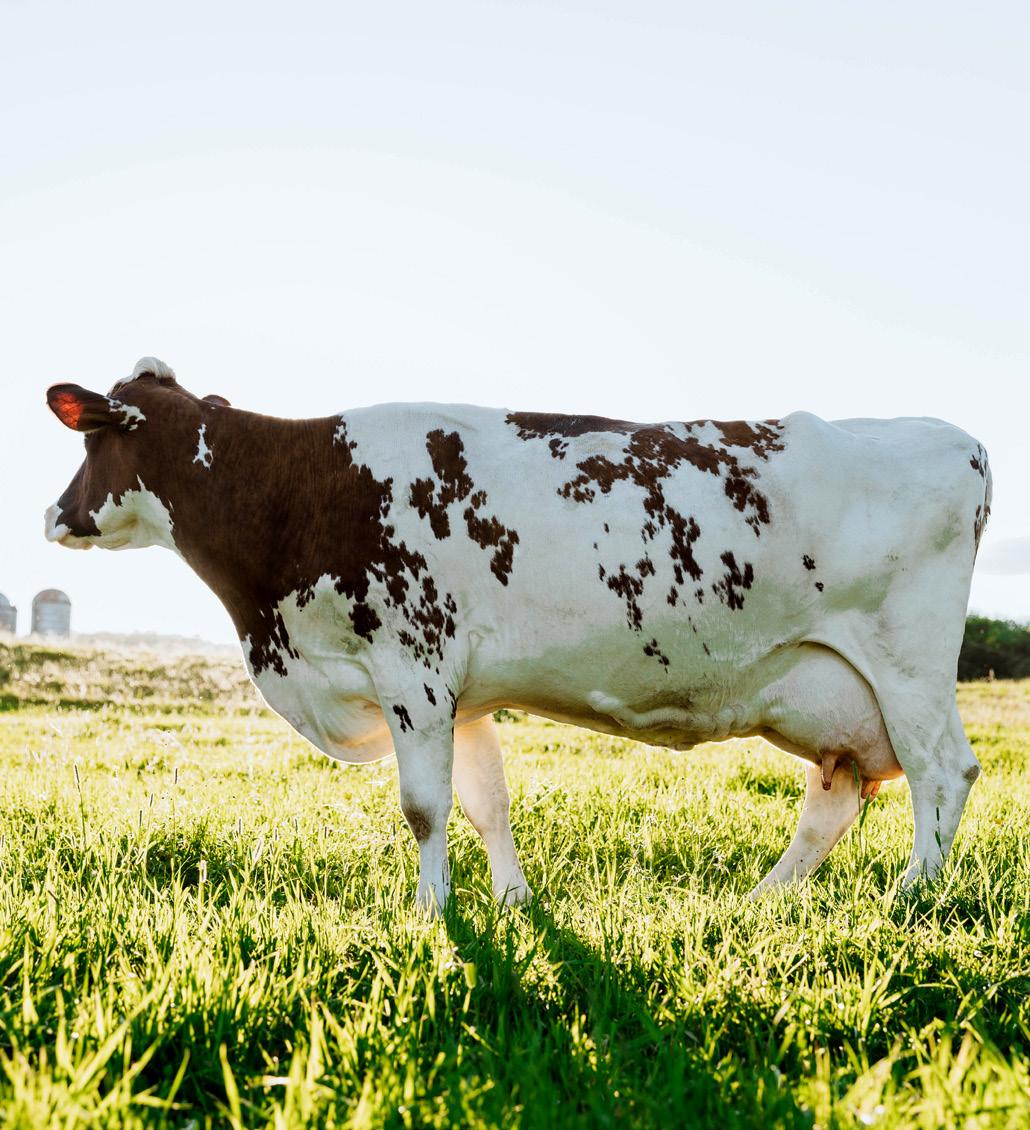
1 FARMER LETTER 2 OUR ORGANIC FARMING IMPACT 3 LETTER FROM THE CEO 4 CARE FOR ANIMALS 5 INNOVATING CARE 6 ECOSYSTEM MANAGEMENT 7 WHY WE EXIST 8 CARE FOR EARTH 9 CLIMATE ACTION 10-11 FACILITY SUSTAINABILITY 12-13 SUPPLY CHAIN RESILIENCE 14-15 OUR ORGANIC FARMING IMPACT 16 CARE FOR PEOPLE 17 PEOPLE ON A MISSION 18-19 CARE FOR COMMUNITY 20 COOPERATIVE GIVING 21 COOPERATIVE GOVERNANCE 23-24
INDEX
WE MUST PREVENT EXTINCTION
SIGNED BY 50 OF THE SMALL ORGANIC FAMILY FARMS OF ORGANIC VALLEY
By Selina Rooney, Organic Valley Farmer-Member and Lifelong Vermont Farmer

The food and farming system in the U.S. is at a critical juncture. A few entities and people are buying up farmland and consolidating at a record pace, and experienced farmers are aging out of the industry at a feverpitch. As a small family farm dedicated to growing good organic food through a natural system that respects the interdependence of all life, we see the move toward consolidated farmland ownership and loss of deep knowledge of how life intertwines on the farm as an existential threat.
Just last year, our farm was at risk of losing our market to sell organic milk. Dozens of us could have been all but forced to sell to the latest hedge fund snapping up the Vermont countryside or lose our farm forever. The birds, butterflies, and bees that call our pastures and forests homes could have vanished through the wave of a pen in a title company office. Without small family farms, the impact on the quality and diversity of our food would be felt across the nation. The delicious milk that thousands of consumers trust to fill their cups, top off their coffee, serve to their children, and enjoy in countless other ways would have disappeared.
On a fateful spring day, we received a call from the Organic Valley team, and then a visit from some of the cooperative’s employees. They said they had heard about the situation, and that they were here to do something about it. They offered a home for our farm, a community of over 1,600 other farms, and a way to continue farming the land organically.
Without the cooperative, and support from people across the country in countless store aisles, small organic family farms face extinction. But because of the support of thousands, Organic Valley is able to intercede on behalf of small family farms and helps us continue to farm in harmony with nature.
The following pages of this Impact Report will show you a glimpse into the power those natural systems have to improve the quality of life and the interdependence with nature which we all benefit from and rely on. These systems must be saved, and you can help us do it.
2
OUR ORGANIC FARMING IMPACT
540
WE KNOW THAT MILLION POUNDS of chemicals
57% KEPT OUT OF THE ENVIRONMENT SINCE 1988 –EQUIVALENT TO 360,000 ADULT BLUE WHALES

HERDS AVERAGE
80
of U.S. ORGANIC DAIRY FARMS are SUPPORTED by 3.5x smaller than U.S. dairy average
We are AMERICA'S LOW CARBON FOOTPRINT DAIRY –nearly 25% fewer emissions compared to dairy averages
19 just DAIRY COWS
million pounds of food donated in the last
7 years
Funding tree plantings on pasture for shade and carbon capture
3
THOUSANDS OF FAMILIES ACROSS THE U.S. DEPEND ON ORGANIC VALLEY

Coming from decades of bringing food to the shelves, I find it more and more inspiring to work for and with the small organic family farms of the cooperative behind Organic Valley. As with many, my winding journey to organic started with a focus on my own family’s health. I searched stores for good, wholesome food for years as my family grew. As our refrigerator became more stocked with organic options, I sometimes questioned the cost of the grocery bill. That was, until one day, when I turned the Organic Valley milk carton around while eating my morning bowl of cereal. The story that unfolded on that carton of milk changed the course of my life and my career.
It was refreshing to see a story about small family farms working in harmony with nature; it was reassuring knowing my family’s milk money went to the farmers who owned the business; and it was fulfilling to see cows out on pasture enjoying grass and sunshine. And today I am honored to serve the cooperative that makes all those stories possible.
While I am new to Organic Valley, having started as CEO in January of 2023, I am excited about what the future will bring. The story of this farmer-owned cooperative is expanding to include the real impact of the farms of Organic Valley – from the way they care deeply for the earth and animals all the way to the future of carbon and climate action.
In this report, you will learn a bit about what this cooperative of small family farms has done and what we will do as a force for good focused on delivering high-quality, nutritious food to the country. We challenge you all to turn your milk carton around and discover the impact your milk money has on food and farming.
Jeff Frank
4
CARE for ANIMALS

5
SMALL ORGANIC FAMILY FARMS INNOVATING CARE
BECAUSE WE ENCOURAGE INNOVATION AND RECOGNIZE FARM DIVERSITY, WE FIND OUR FARMER-MEMBERS ENGAGING IN A VARIETY OF ON-FARM PRACTICES AHEAD OF THE INDUSTRY AS THEY LOOK FOR NEW AND CREATIVE WAYS TO PROVIDE EXCELLENT CARE FOR THEIR ANIMALS THAT FIT THEIR UNIQUE FARM CIRCUMSTANCES.
Farms focused on sow’s mothering ability in a natural environment rather than restricting access to piglets.
Farms allow calves access to pasture from an early age so they can learn to graze and explore their environment.


Dairy farms where calves spend different periods of time with their mothers and other adult herd members.

Farms applying different weaning periods as they raise their calves.
Farms that use natural forms of fly control such as working with native bird species to control fly populations.
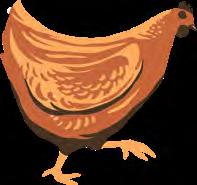
Providing animals choice to explore their environment as they want.
Providing cow brushes to let cows get scratches as needed.
Grooming cows to provide those special girls with a little TLC.

CARE FOR ANIMALS 6
ECOSYSTEM MANAGEMENT


HELPING PREVENT EXTINCTION
On Organic Valley family farms, life thrives. Home to millions of beneficial insects, birds, bees, butterflies, microbes, and critters of all shapes and sizes, small organic family farms are refuges for life on Earth, with many small organic family farms shown to have 34% more biodiversity than conventional farms. Birds are especially loved on many Organic Valley farms, and a few of the birds that are under threat of extinction and call our small family farms home are described on this page. Thank you to our friends at the Audubon Society for helping us understand more about these beautiful creatures.
Eastern Meadowlarks songs are beautifully flutelike but are heard less and less throughout the rural countryside. These birds love the kinds of grasslands that are often paved over by urban sprawl and development, eliminating their habitats one by one. Thankfully, our farmers in Wisconsin, Michigan, Minnesota, and throughout the Midwest provide plenty of habitat in the form of grasslands grazed by cows and called home by all sorts of bugs, birds, and beetles.

Streaked Horned Lark is a stunning bird that is in danger due to the loss of their natural habitat caused by urbanization and development. However, Organic Valley farmers in Oregon, Washington, and across the Pacific Northwest are working to preserve and protect grasslands that provide a haven for these beautiful birds and other wildlife. Through sustainable and conservation-focused practices, these farmers are creating healthy grassland habitats that support the streaked horned lark and other essential species.

Bobolinks sound like R2D2, chirping a nearly robotic melody from the grasslands they call home. In the Northeast, in states like Vermont, New Hampshire, and New York, bobolink populations are rapidly declining. These enigmatic birds thrive flying just above wide-open grasslands, the kinds our farmers grow and care for to feed their cows and provide a home to nature in all its forms. This is just one of the many species of birds, bees, and butterflies that call our family farms home.

CARE FOR ANIMALS 7
WE EXIST TO SAVE SMALL FAMILY FARMS
MEMBER FARMS
over 1400
DAIRY
TOTAL over 1600
We serve over 50% of the organic dairy farms in the U.S.
+4000
FARM CONTACTS LAST
YEAR
+2500
Average farm size is

COWS80
Farms have an Annual Animal Care Check-in and full audit every 3 years
KEY ANIMAL CARE STANDARDS:

Pasture and Outdoor Access Standards – we recognize the importance of letting animals outside.
Preventative Care – we emphasize preventative care and proactively promoting health.
Treatment – requirement of treatment if illness arises.
FARM VISITS
3.5x smaller than U.S. dairy average
Farms can be triggered for a full audit to address signi cant concerns
Metrics and Outcomes – our standards are focused on measuring animal welfare as this is the key outcome we are looking for rather than de ning narrow means of reaching that outcome.
Trigger Standards – in our latest dairy animal care standards we are piloting the use of trigger measure to allow us to reward farmers while also delving in deeper where challenges exist.
CARE FOR ANIMALS 8
CARE for EARTH
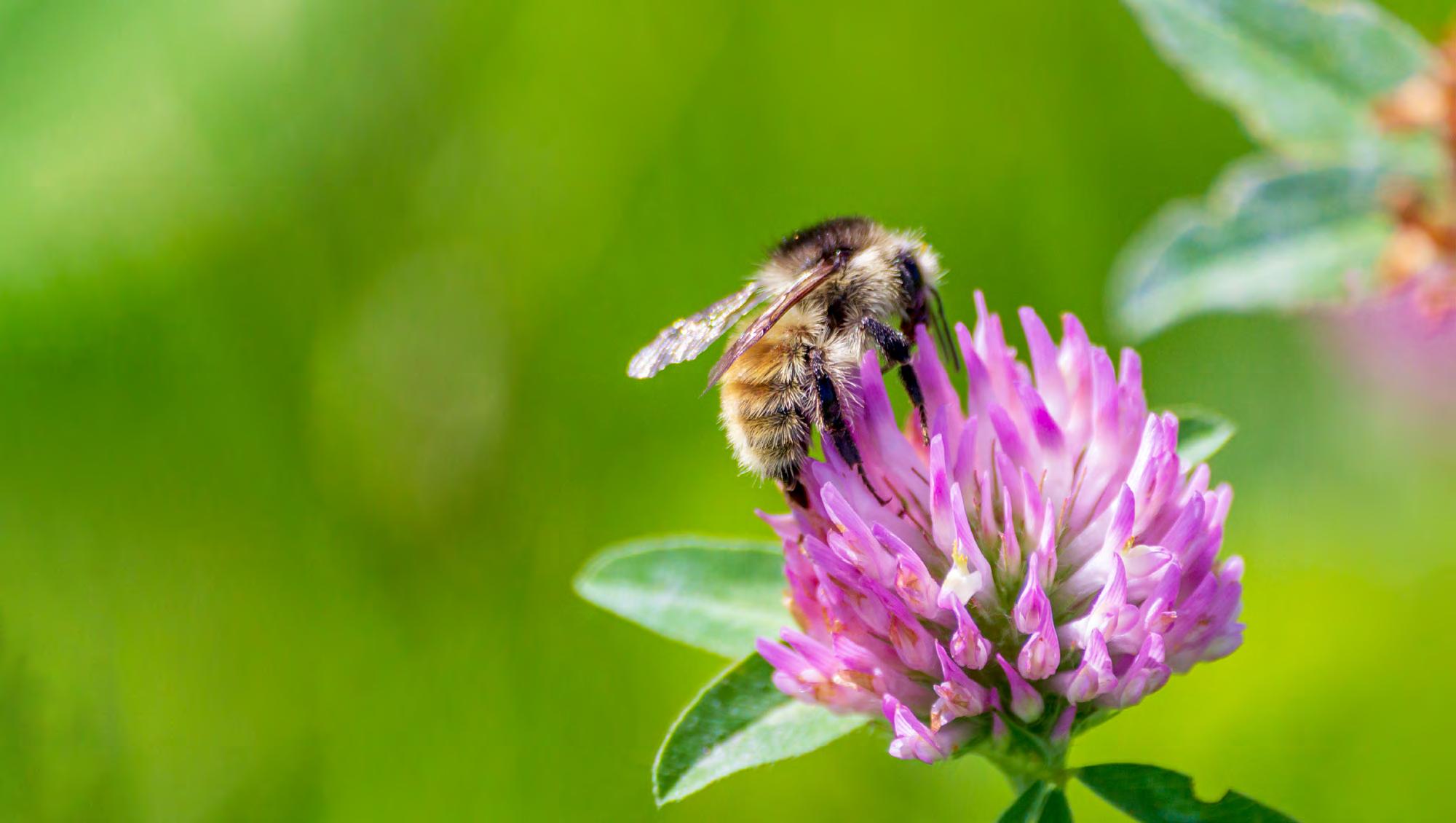
9
CLIMATE ACTION
REDUCING FARM EMISSIONS WITHOUT CARBON OFFSETS
We are committed to becoming carbon neutral by 2050, and we want to reach that goal by working with the small organic family farms of our cooperative. We are taking a unique approach to that goal by developing an innovative new carbon insetting program called the CROPP Carbon Insetting Program (CCIP).
Organic Valley’s CCIP incentivizes and assists Organic Valley farmers in implementing regenerative, climate-smart farming practices like planting regional trees and composting. This innovative program will enable Organic Valley to reach carbon neutrality without a reliance on carbon offsetting—purchasing external carbon credits—as many companies do.
The new program is designed to help Organic Valley reach carbon neutrality through on-farm sustainability programs that meet, or go beyond, Natural Resources Conservation Service standards such as tree plantings, improved manure management, renewable energy, energy efficiency, feed management, and enhanced grazing and cropland practices.
CARBON OFFSETTING occurs when a company purchases carbon credits from a project developer or broker and “applies” the credits to its carbon footprint. The credits result from carbon reductions and/or removals that occur outside of the company’s supply chain.

CARBON INSETTING is the practice of investing in carbon reductions and/or removals within a company’s own supply chain. Removals are natural strategies like tree plantings and soil health improvements that result in removing greenhouse gas emissions from the atmosphere through a process called carbon sequestration.
By participating in the CROPP CARBON INSETTING PROGRAM, our farmer-members can ensure that their carbon credits stay with their farm and benefit the co-op, helping to reach our collective carbon-neutral goal. Over the next five years alone, we intend to work with approximately 500 Organic Valley farmer-members to implement over 1,000 climate-smart farming practices.
5 YEARS
500 Organic Valley Farmers
1,200 Carbon Insetting Projects
CARE FOR EARTH 10
CLIMATE ACTION: LCA AND CARBON INSETTING OUR
CARBON HOOFPRINT
We are dedicated to reducing our carbon footprint, but we also want to be transparent about how we reach our carbon goals. To track our progress, we have set a series of milestones, including reducing our carbon footprint by 15% by 2030 and 30% by 2035, with the goal of reducing our carbon footprint by 117,489 metric tons of CO2e by 2030.
To achieve these targets, we are tracking our carbon footprint year after year and working with organizations such as the University of Wisconsin – Madison to conduct life cycle assessments. These assessments help us determine our baseline greenhouse gas emissions and understand the environmental impact of our products throughout the entire supply chain, from the farm to the retailer’s dock. We are excited to share that this study has been peer reviewed and published in the August 2022 edition of the Journal of Cleaner Production.
Part of our decades-long commitment to sustainability is our dedication to reducing our carbon footprint, which includes tallying all the greenhouse gases generated in the production of our products and tracking our progress year over year. By continuously striving for excellence and partnering with organizations such as the University of Wisconsin – Madison, we at Organic Valley aim to be leaders in sustainable food production and work toward a better future for all.
Organic Valley’s national dairy farms’ average greenhouse gas emissions are 24% LOWER than other conventional U.S. dairy averages!
Organic Valley’s LCA revealed the power of getting cows grazing on fresh grasses.
CARBON SEQUESTRATION FROM PASTURE AS WELL AS FROM FORAGE AND CROP PRODUCTION REDUCED NET EMISSIONS BY 15% ON AVERAGE.
The analysis was customized for organic pasture-based dairies and the specific farm management practices found on Organic Valley dairies. It factored in farm characteristics such as milk production volume, housing type, cows’ diet, manure management, and — notably — a new methodology to factor in carbon sequestration.

CARE FOR EARTH 11
ORGANIC VALLEY’S FACILITY SUSTAINABILITY
WALKING THE WALK, WITH ROOM TO RUN
At our cooperative, we take our responsibility to the environment seriously, especially when it comes to our owned real estate. That’s why we approach our environmental footprint from five key perspectives, each one a critical component in our ongoing efforts to minimize our impact on the world around us.
1 2 3 4 5
LAND MANAGEMENT ENERGY WATER WASTE INDOOR AIR QUALITY

We recognize the need for balance between building occupant health, safety, and comfort and trying to be efficient and resourceful.
1 Land Management
At Organic Valley, sustainable land management is at the heart of who we are. We understand the important connection between the land and our waterways and strive to minimize our impact on both through the use of local, adaptable management practices.
Over 20% of our land is dedicated to protected pollinator habitats.
We employ practices such as installing bioswales in parking lots to filter pollutants from runoff and strategically use salt to protect local watersheds.
We use native organic landscaping at all of our owned buildings and preserve approximately 5 acres (about twice the area of a Manhattan city block) of the rare Oak savanna.
We are dedicated to responsible, sustainable land management for the benefit of future generations.
2 Energy
We strive for energy efficiency that aligns with our commitment to promoting respect for the interdependence of our planet and all its inhabitants. We understand that thermal comfort is a crucial aspect of our daily lives, especially in challenging environments like Wisconsin winters. This is why we approach energy with a two-pronged approach - we work tirelessly to run our operations
as efficiently as possible, while also investing in renewable energy sources to mitigate our impact on the environment.
Our headquarters uses an innovative chilled-beams HVAC SYSTEM THAT IS 10-18% MORE EFFICIENT
THAN TRADITIONAL systems and requires fewer refrigerants.
We have one LEED Gold Certified building which uses about 55% less energy than a typical office building of its size.
Our refrigerated warehouse at our distribution center has a unique roofing design that incorporates an additional layer of thermal insulation to keep the cold air where we need it.
Three of our buildings incorporate solar panels, with a total system capacity of 200 kW.
Two of our buildings have solar hot water systems.
One of our buildings uses a unique geothermal system to reduce the electrical load of our HVAC operations.
In 2012, Organic Valley leased land for a joint venture with Gundersen Health System to erect two wind turbines. In 2019, we leased 17 acres of land for a solar farm. The energy generated by these two systems is used to reduce the electrical load of neighboring communities. Organic Valley purchases Renewable Energy Credits (RECs) from these systems to offset the entirety of our Scope 2 electrical usage.
CARE FOR EARTH 12
ORGANIC VALLEY’S FACILITY SUSTAINABILITY

WALKING THE WALK, WITH ROOM TO RUN
3 Water
Conserving water is not just about reducing use, but also about creating a sustainable future. We believe that a crucial aspect of this is fostering a culture of responsible water management. This is why we put an emphasis on water conservation in our facilities planning, as it aligns with our commitment to promoting a more sustainable world.
Our conversion and labelling facility, also known as CALF, has a hot water recovery tank which reuses water heated from the ghee process to use for cleaning
Low-flow faucets and toilets
4Waste
Reducing waste is not just about the act of recycling, but also about creating a sustainable future. We put a strong emphasis on reuse in our facilities planning, as it aligns with our commitment to promoting a more sustainable world. Our ultimate goal is to lead by example with nature-based, responsible waste management.
Base board made of ash cut down due to emerald ash borer
Composting on-site – 8-10 tons per year
Conference room tables are made from recycled wood
Carpet and furniture vendors are carbonneutral companies dedicated to cradle-tograve recycling
5Indoor Air Quality
Air quality in our workplaces is essential for the health and wellbeing of employees, farmers, and our community. Air quality has long been extremely important to us. That’s why we’ve included indoor air quality as one of the key components of sustainability in our buildings. Some features our employees and visitors enjoy include:
No VOC paint and carpet
UV lights in air handling units
High-quality filters well beyond the required spec
CARE FOR EARTH 13
SUPPLY CHAIN RESILIENCE
BUILDING A SUPPLY CHAIN FOR SMALL ORGANIC FAMILY FARMS
Organic Logistics
As a cooperative, we are driven by a desire to support the growth and success of other organic companies. Our subsidiary, Organic Logistics, provides logistics services to small, value-driven food businesses that lack the resources to fill a standard semi-truck or similar, traditional supply chain resources. By offering shipping solutions through the sale of space on our trucks, we are able to promote efficiency and sustainability for all. This not only benefits our partners, but also contributes to the diversified income of our cooperative. Our mission is to advance the organic movement and demonstrate the true definition of cooperative business practices.
Fuller trucks = fewer trucks on the road. From 2021 to 2022, we increased the loads on our trucks by over 1,300 lbs. — equating to over 500 fewer trucks on the road and increased supply chain efficiency.
Organic Logistics more than doubled the number of cases of organic products moved from 2021 to 2022, helping reduce operating costs by 25% at our distribution center.
Safety of the Supply Chain
We believe that the health of our planet and the well-being of communities are intertwined with the success of our supply chain. That is why we have implemented programs that promote sustainable agriculture and reduce waste. Our focus on supply chain resilience is unwavering, and we believe that this mission starts with small organic family farms. Our approach includes:
Quality practices: we operate with approximately 20 food safety and quality programs and 57 total quality checks from farm to consumer. We also have strong relationships with our suppliers and promote sustainable agriculture and waste reduction efforts. Our goal is to create a sustainable and resilient supply chain that benefits everyone along the way.
Advanced planning software: We use advanced planning software to maximize efficiency and miles while serving small organic family farms and keeping costs down.
Over 50%
of our carrier-partners are SmartWay-certified
by the EPA. More than 91% on-time delivery even amid the pandemic’s logistical challenges, reinforcing the resilience of our cooperative’s supply chain infrastructure.
Robust IT technology: Our IT, programs, and teams work around the clock to protect our networks from sophisticated hackers and ensure that our supply chain teams have the resources they need.
Customer-focused: Our Production, Demand Planning, and Distribution teams are relentlessly focused on the customer, and our efforts have resulted in a 28% increase in the throughput of cases to our customers from 2021 to 2022.
CARE FOR EARTH 14
SUPPLY CHAIN RESILIENCE
BUILDING A SUPPLY CHAIN FOR SMALL ORGANIC FAMILY FARMS

Investing in Brick and Mortar
Our cooperative relies on over 80 co-processors nationwide to ensure we have the freshest products produced as locally as possible, but we also invest in our own production facilities to meet key balancing needs of our farmer-members, providing risk mitigation and fulfilling the strong demands of a complex supply chain built around small organic family farms.
In April of 2021 we experienced a devastating fire at our creamery in Oregon. Thanks to our internal teams and supply chain resiliency, we were able to rebuild and recover in record time of only eight months despite navigating a global pandemic, supply chain delays and unprecedented inflation.

Internally, we own strategic balancing creameries at the epicenter of our milk supplies in the PNW and Midwest. With our facilities, we can process over 500 million pounds of fluid organic milk while making organic butter, dairy powders, and standardized fat levels.

Our ability to self-balance our supply enables us to remain independent and extend shelf life of our members, supply while ensuring we maximize the value of our products at the right time.

CARE FOR EARTH 15


ORGANIC ACRES MILLION POUNDS of chemicals PASTURE ACRES SEQUESTERING CARBON 460,000+ 189,000 KEPT OFF THE LAND since 1988 540 AMERICA'S LOW CARBON FOOTPRINT DAIRY LOWER than conventional U.S. dairy averages! Average greenhouse gas emissions are 24% OUR ORGANIC FARMING IMPACT of our farms use renewable energy 150 CARE FOR EARTH 16
CARE for PEOPLE



Since our beginning in 1988, we have strived to provide an authentic, fun, and meaningful atmosphere filled with mission-driven people working hard to do great work for small organic family farms and our planet. The culture this has created and the people it attracts set us apart from many other companies.



















To show our care for our people and to continue setting ourselves apart from other employers, we are constantly reviewing and improving what we offer our more than 950 employees.




17
PEOPLE ON A MISSION

EMPLOYEE EXPERIENCE
As the employee-employer relationship evolves in the U.S., Organic Valley has put in the work to understand current employee needs and sentiment and bring to life the work experience they desire.






Approximately 200 staff were engaged in focus groups in 2022 to learn more about this. Extensive focus groups were conducted with our frontline staff to understand their employee experience, how it compares to other employee groups, and areas where they’d like to see improvement.
Organic Valley transitioned to a new employee recognition platform in 2022, making recognition easier, consistent, and more impactful across the business. With the new platform came a revised annual engagement survey, allowing for better understanding of employee needs in the workplace and how engaged employees are with Organic Valley’s mission.
In 2023, Organic Valley’s new hire onboarding program will begin to transition to an extended onboarding program, focusing first on our mission, our history, and demonstrating each employees’ value to the co-op. New employees will then be more closely guided and supported in their first 90 days with curated resources, required trainings, and dedicated mentors.
Leadership development paths, from programs like our innovative Emerging Leaders program to an Executive Development Cohort, are available through our Learning and Organizational Development department to support employees interested in advancing to leadership roles at the co-op. In 2023, a Next Level Leadership Program will be launched to support people-leaders interested in increasing their leadership skills.
CARE FOR PEOPLE 18
PEOPLE ON A MISSION
EMPLOYEE WELL-BEING
Organic Valley is dedicated to supporting the health and well-being of its employees, both on and off the job. Our commitment includes the following initiatives:
Paid parental leave: We offer six weeks of paid parental leave for partners of all genders, and in 2022, 107 employees utilized this benefit.
Flexible work arrangements: Our Flex Work Policy allows for alternate work arrangements and schedules to accommodate employees as they navigate life changes and demands outside of work.
Wellness programs: Our Wellness Reimbursement Program reimburses employees up to $360 every year for health and wellness activities not covered by insurance, and in 2022, 631 employees participated, with a total of $201,141 reimbursed.
Mental health resources: All employees and their family members have free access to Modern Health, a mental well-being platform that provides comprehensive mental health care, including one-on-one clinical therapy and coaching, self-led courses, and group workshops.
Mental Health First Aid: In 2023, all employees will have access to a Mental Health First Aid course for free, designed to help them recognize signs and symptoms of mental health challenges and connect those in need with the right resources. Organic Valley is committed to enabling a healthy human livelihood for all of its employees and is proud to support them at every stage of life as they experience exciting changes, challenges, and unique needs.
Diversity, Equity, Inclusion and Belonging
We are on a journey of continuous improvement to become a more diverse, equitable, and inclusive organization. Most recently, we have taken thoughtful steps in the areas of gender and racial equity. In 2023, we will continue our partnership with nINA Collective to evolve our racial equity work into a long-term plan for diversity, equity, inclusion, and belonging (DEIB) at the cooperative level.
Gender equity
Our male-to-female pay ratio is nearly equal. Every other year, data analysis is conducted to make sure this trend is maintained or improved.
Women make up 48% of our workforce.
Women hold 45% of leadership roles (and 43% of upper leadership roles).
Racial Equity
Diversity in agriculture is needed, and Organic Valley is committed to being part of the solution by funding projects that support diversity, equity, inclusion, and belonging. Since 2016, we have awarded DEIB-specific grants to organizations like Midwest Organic and Sustainable Education Service (MOSES), Renewing the Countryside, and Planting Justice to name a few.
Our Racial Equity Core Team sponsors monthly recognitions of DEIB holidays and remembrances through internal communication avenues and engagement opportunities. Recognitions have included Native American Heritage Month, Hispanic Heritage Month, Black History Month, and many more — most of which include paid learning opportunities for staff to participate in.
CARE FOR PEOPLE 19
CARE FOR COMMUNITY
COOPERATIVE GIVING
Growing Organic Communities and Taking Care of Our Neighbors
As a cooperative, we value taking care of our community and caring for each other. Following in the footsteps of our cooperative’s pioneers, who were motivated to work together and farm differently amid the 1980s farm crisis, Organic Valley continues to value community, remaining good stewards of the land and supporting future farming generations. These foundational philosophies that our cooperative has operated on for nearly 35 years guide us today. We are proud and humbled to give back to our organic and local communities.
For 35 years, our cooperative of organic family farms has supported the rural communities where we live and work through hundreds of giving efforts, and both employees and farmer-members alike are involved in the decision-making. We donate branded Organic Valley products to local and national organizations and food banks. We operate a scholarship program, contribute funding that organizations need to launch and sustain their important work, and offer professional services such as technical resources and mentorship where we can. Doing these things is part of being a responsible cooperative and a caring community resource.
It is vital to maintain and expand the market for our organic farmers so that we can provide delicious organic food to consumers everywhere and continue growing opportunities for family farmers to thrive. One of our vehicles to ensure this happens is our Farmers Advocating for Organic (FAFO) fund This fund has contributed to shaping the foundation of the organic industry by financially supporting critical on-farm and product research, advocacy for policy development, and educating consumers to make informed purchasing decisions by voting with their dollar.
FAFO HAS SUPPORTED
315 GRANTS TOTALLING
$ 7.6 MILLION since its inception
CROPP
HAS DONATED THE EQUIVALENT OF 30 MILLION MEALS of organic food since 2015, overall 19 MILLION POUNDS of food
Our giving focuses: organic research, education and advocacy, farmers, next generation, healthy soils, local and rural communities.

By working together, our cooperative is growing the future for organic family farmers and the organic industry to benefit people, animals, and the planet.

CARE FOR PEOPLE 20
COOPERATIVE GIVING
GROWING ORGANIC COMMUNITIES AND TAKING CARE OF OUR NEIGHBORS
We are proud to support the following partners in these efforts:
NATIONAL YOUNG FARMERS COALITION
Provides opportunities for young organic farmers to fly to Washington D.C. to advocate for organic agriculture in the 2023 Farm Bill.
ORGANIC GROWERS SCHOOL
Provides mentorship, networking, support services, and comprehensive training to help organic farmers plan a more sustainable and selfsufficient future for their businesses.
TILTH ALLIANCE
Advocates on behalf of organic agriculture in the Pacific Northwest region and aims to ensure the voice of the Washington State organic community is being heard in D.C. ahead of the creation of the 2023 Farm Bill.
ORGANIC FARMING RESEARCH FOUNDATION (OFRF)

Creates farmer-led resources on crop-livestock integration for farmers, consumers, and policymakers, translating science-based resources into actionable policy recommendations for broader public engagement.
CALIFORNIA CERTIFIED ORGANIC FOUNDATION (CCOF)
Carves a path for many young farmers to get into organic agriculture through the Future Organic Farmers grant program, which invests in vocational and higher education students who are looking to advance their organic agriculture studies.
DAIRY GRAZING APPRENTICESHIP
CROPP farmer-members participate in this mentorship program, training aspiring dairy farmers in all aspects of running a managed grazing dairy operation.
MARBLESEED

Formerly known as Midwest Organic & Sustainable Education Service (MOSES)
Operates one of the largest events for organic farming in the country and recently expanded its organic specialist program to reach more organic farmers in underserved communities.
RODALE INSTITUTE

Studies the nutritional benefits of organic forage and a lowinput, grain-based system to understand the link between soil health and crop nutrient quality and to educate consumers on the nutritional value of organic food.
GRASSROOTS AID PARTNERSHIP (GAP)
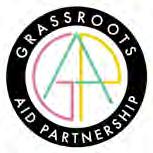
Provides healthy food and aid to vulnerable communities in crisis by directing goods and donations to communities in need during and after natural disasters.
THE CHEF ANN FOUNDATION
The Chef Ann Foundation ensures that school food professionals have the resources, funding and support they need to provide fresh, healthy, delicious, cook from scratch meals that support the health of children and our planet.
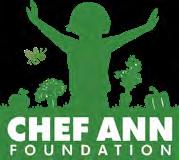
CARE FOR PEOPLE 21

22
“
It is vital to maintain and expand the market for our organic farmers so that we can provide delicious organic food to consumers everywhere and continue growing opportunities for family farmers to thrive.
”
COOPERATIVE GOVERNANCE
ENSURING FARMERS HAVE A VOICE 2 1 3
IN 2022:
COOPERATIVE GOVERNANCE How is Organic Valley Governed?
Our system of governance ensures farmer-members remain in control of the co-op’s direction and safeguards the mission and purpose of the business and the members it represents.
REGIONAL MEETINGS WERE HELD
60+
Farmer Executive Commitee meetings held
78 PEOPLE 800
A system of governance that upholds democratic member control is critical to:
Maintaining existing member dedication and attracting new members.
Safeguarding trust in the cooperative.
Strengthening confidence in the strategic direction of the cooperative.
Dedication, trust, and confidence increase our strength and resilience and is foundational to our ability to function as a viable business.
Governance: The Essentials
While employees are the day-to-day decision-makers of the cooperative, members are tasked with upholding our mission by carefully reviewing and updating our bylaws, policies and standards, and advising the board and staff on critical topics.
At CROPP, our model is “one farm, one vote.” Regardless of the farm’s size, location, products, or volume, each farm has equal voting power. Farmers vote on important topics as needed, and they vote to elect farmer representatives to the board of directors and each pool’s executive committee to represent their voices annually.
The board of directors is made up of seven farmer-members, and this body holds the highest authority in the cooperative. The board sets policies and standards for the cooperative with the advice of committees, task forces, and staff experts. The board also sets pay price and hires and oversees the CEO. (including farmer-members, their families, and employees) attended the cooperative’s 2022 Annual Business Meeting.
CARE FOR PEOPLE 23
Farmer-owners across the country gather to determine the future
12
COOPERATIVE GOVERNANCE
FARMERS AND EMPLOYEES WORKING TOGETHER
At our cooperative, a symbiotic partnership exists between the farmer-owners who safeguard the mission and the employees who execute the vision. The longevity of the cooperative depends on both.

Way back in 1988, our founding farmers knew they wanted to create a different kind of cooperative, one that upholds democratic processes and farmer-ownership. It didn’t take long, however, for the founders to realize that employees would be vital to the growth and success of their dream.
From our inception, this cooperative has had a different kind of relationship between farmers and employees, one based on mutual respect and acknowledgement. Farmers are caretakers of the mission; employees are the day-today decision-makers who advance that mission. For our farmer leadership to focus on governing, not managing, we look for employees who believe in and are aligned with the values embedded in our purpose.
Another way we flipped the script is cultivating a philosophy of a multifaceted bottom line. Corporations are concerned with the well-known bottom line of their balance sheet. Because this is the primary indicator of economic well-being for corporations, there is really no such thing as a desirable cost or an undesirable profit.
Cooperatives, on the other hand, complicate the agenda. They exist to serve their member-owners, which often have many, and sometimes opposing, financial implications. Paying farmers more for their milk enhances farmers’ wellbeing, thereby creating a cost on our balance sheet that the co-op wants to see. On the other hand, too many costs could threaten the financial viability of the co-op’s survival, which, unchecked, would undermine members’ well-being.
This is a constant tension. What it means in practice is that the kinds of financial decision-making that may be delegated to computers in corporations requires, in CROPP, a vibrant democracy, clear decision-making roles and responsibilities, and a commitment to farmers and employees working together to advance the mission.
CARE FOR PEOPLE 24
Farmers are caretakers of the mission; employees are the day-to-day decision-makers who advance that mission.
While farmers in our cooperative have a multitude of practices that they have passed down from generation to generation or invented for the first time just this last year, we only have space to talk about a few of them in this report. If you want to learn more, however, we have a world-class news and resources site called Rootstock (www.OV.coop/blog) where you can find all the latest and greatest, and some of the old and powerful in food and farming information.










































































